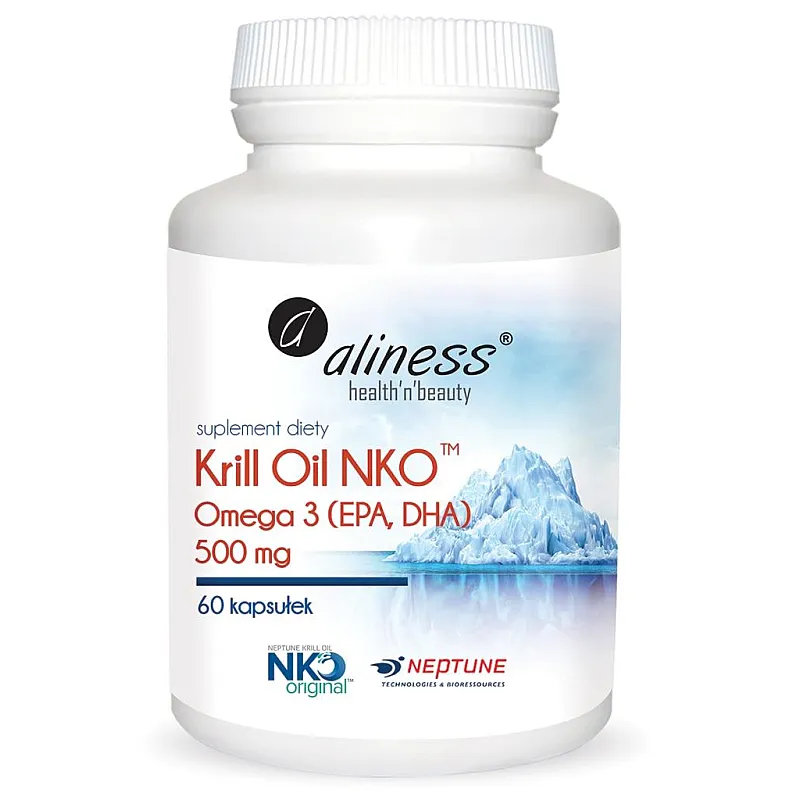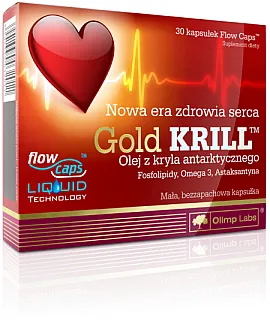- Patented NKO™ krill oil
- A source of valuable omega-3 fatty acids
- An alternative to fish oil
- Very high purity
Aliness Krill Oil NKO™ is a dietary supplement that contains patented Antarctickrill oil, which is a natural source of omega-3 fatty acids and astaxanthin - substances with powerful antioxidant potency.
Antarctic krill(Euphausia superba) is a tiny crustacean that inhabits the waters of the Southern Ocean. Its food is algae and phytoplankton, while it is a tasty morsel for sea birds, seals and whales. It is an edible creature and can easily be consumed by humans as well. For many years krill have been commercially harvested, and the oil extracted from them is considered an alternative to fish oil.
Krill oil is abundant in valuable nutrients. It is a rich source of omega-3 fatty acids, especially the most desirable EPA and DHA, which have a beneficial effect on the human body, supporting the proper functioning of the brain and heart, and contributing to the maintenance of normal vision. In addition, you can find phospholipids with it, which are important components of cell membranes. Krill oil owes its unique red color to the presence of astaxanthin. The substance has earned the title of one of the most potent antioxidants known. This is because, due to its unique chemical structure, it is capable of neutralizing free radicals of any type.
The presented preparation is distinguished by its excellent quality. It has in its composition a unique form of krill oil, patented by Neptune, a pioneer in the use of krill oil for supplementation purposes. NKO™ oil has a higher fat content of 98% and provides up to seven times more astaxanthin than other ordinary krill oils. Astaxanthin exhibits strong antioxidant properties, thus helping to enhance the stability of the oil, protecting it from oxidation and enabling the manufacturer to forgo the use of chemical preservatives. It is worth mentioning that NKO™ Krill Oil has been thoroughly tested for the presence of toxins and contaminants, and an independent laboratory has confirmed its highest purity and quality.
In conclusion, Aliness Krill Oil NKO™ is a dietary supplement that allows you to enrich your diet with valuable unsaturated fatty acids and a powerful antioxidant. The product can be taken as an alternative to cod liver oil or supplements based on fish oil.

